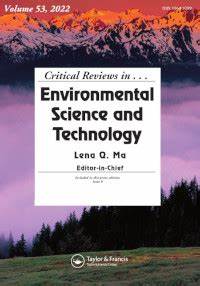生物炭衍生溶解有机质(BDOM)及其对土壤微生物群落组成、功能和活性的影响
IF 11.4
1区 环境科学与生态学
Q1 ENVIRONMENTAL SCIENCES
Critical Reviews in Environmental Science and Technology
Pub Date : 2023-03-31
DOI:10.1080/10643389.2023.2190333
引用次数: 1
摘要
摘要生物炭溶解有机质(BDOM)通过影响土壤理化和生物特性,为土壤微生物提供养分,在土壤生态系统中发挥着重要作用。它可以增强或抑制某些土壤微生物的生长,这取决于其组成和不稳定有机化合物的含量。本文旨在讨论和总结BDOM在改变土壤微生物功能、微生物群落结构和酶活性方面的作用。我们主要关注BDOM作为其浓度、原料生物质类型和热解温度(PT)的函数的作用。结果表明,木屑和粪肥基生物炭比秸秆、骨和污泥基生物炭产生更高的BDOM浓度。原料生物量的类型及其PT决定了BDOM的特征及其与土壤微生物群落的相互作用。热解温度≤300的植物生物炭 °C通常会产生比热解温度≥500时更脂族的BDOM °C,产生更芳香的BDOM。植物生物炭的BDOM比粪肥生物炭具有更高的比紫外吸收率(SUVA)和腐殖化指数(HIX)。BDOM的SUVA和HIX与总脂肪酸甲酯含量呈正相关(R2=0.68–0.96),但与放线菌、丛枝菌根和真菌群落的丰度呈负相关。然而,BDOM在生物炭改良土壤中的环境命运需要在实验室和田间进行长期实验,以充分了解BDOM与土壤有机质和微生物的相互作用,并有助于调整生物炭在农业生态系统中的安全利用。本文章由计算机程序翻译,如有差异,请以英文原文为准。
Biochar-derived dissolved organic matter (BDOM) and its influence on soil microbial community composition, function, and activity: A review
Abstract Biochar-derived dissolved organic matter (BDOM) plays key roles in soil ecosystem by affecting soil physicochemical and biological properties and supplying nutrients to soil microbes. It can either enhance or suppress the growth of certain soil microorganisms, depending on its composition and content of labile organic compounds. This review aims to discuss and summarize the role of BDOM in modifying soil microbial functioning, microbial community structure, and enzymatic activity. We mainly focus on the role of BDOM as a function of its concentration, type of feedstock biomass, and pyrolysis temperature (PT). Results show that saw dust- and manure-based biochars produce higher BDOM concentrations than straw-, bone-, and sludge-based biochars. The types of feedstock biomass and its PT determine BDOM characteristics and its interaction with soil microbial communities. Plant-derived biochar with pyrolysis temperature ≤300 °C often results in a more aliphatic BDOM than that with pyrolysis temperature ≥500 °C, which yields a more aromatic BDOM. BDOM of plant biochar contains higher specific ultraviolet absorbance (SUVA) and humification index (HIX) than that of manure biochar. The SUVA and HIX of BDOM positively correlate (R 2=0.68–0.96) with the content of total fatty acid methyl esters, but negatively correlate with the abundances of actinomycetes, arbuscular mycorrhizae, and fungal communities. However, the environmental fate of BDOM in biochar amended soil requires long-term experiment, both in laboratory and field scales, to provide a full understating of BDOM interaction with soil organic matter and microorganisms and help to tailor a safe utilization of biochar in agroecosystems.
求助全文
通过发布文献求助,成功后即可免费获取论文全文。
去求助
来源期刊
CiteScore
27.30
自引率
1.60%
发文量
64
审稿时长
2 months
期刊介绍:
Two of the most pressing global challenges of our era involve understanding and addressing the multitude of environmental problems we face. In order to tackle them effectively, it is essential to devise logical strategies and methods for their control. Critical Reviews in Environmental Science and Technology serves as a valuable international platform for the comprehensive assessment of current knowledge across a wide range of environmental science topics.
Environmental science is a field that encompasses the intricate and fluid interactions between various scientific disciplines. These include earth and agricultural sciences, chemistry, biology, medicine, and engineering. Furthermore, new disciplines such as environmental toxicology and risk assessment have emerged in response to the increasing complexity of environmental challenges.
The purpose of Critical Reviews in Environmental Science and Technology is to provide a space for critical analysis and evaluation of existing knowledge in environmental science. By doing so, it encourages the advancement of our understanding and the development of effective solutions. This journal plays a crucial role in fostering international cooperation and collaboration in addressing the pressing environmental issues of our time.

 求助内容:
求助内容: 应助结果提醒方式:
应助结果提醒方式:


